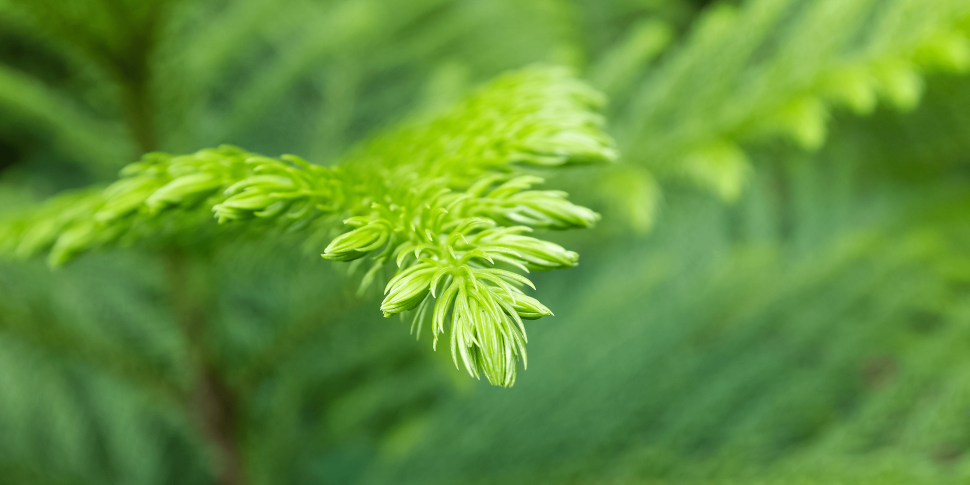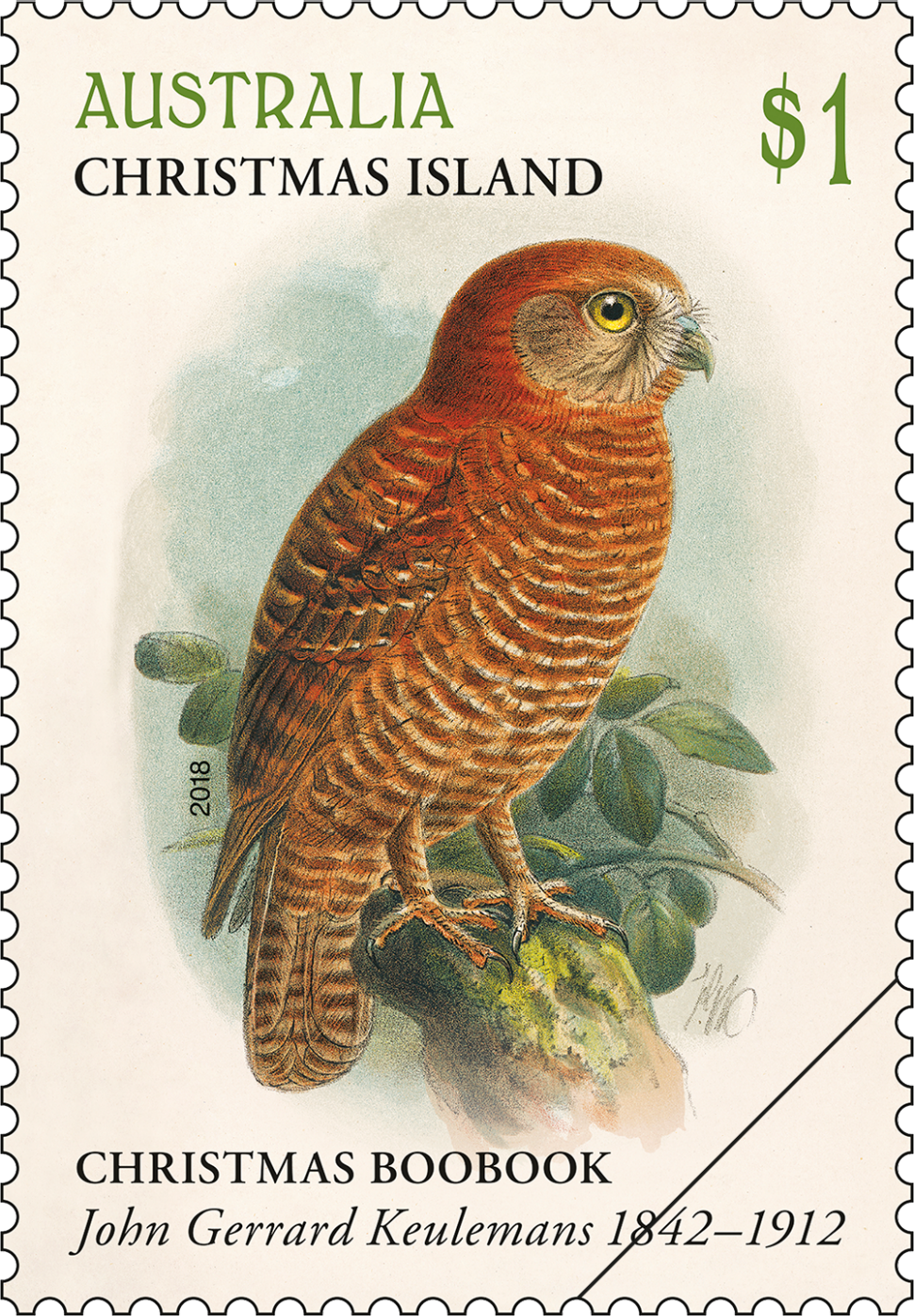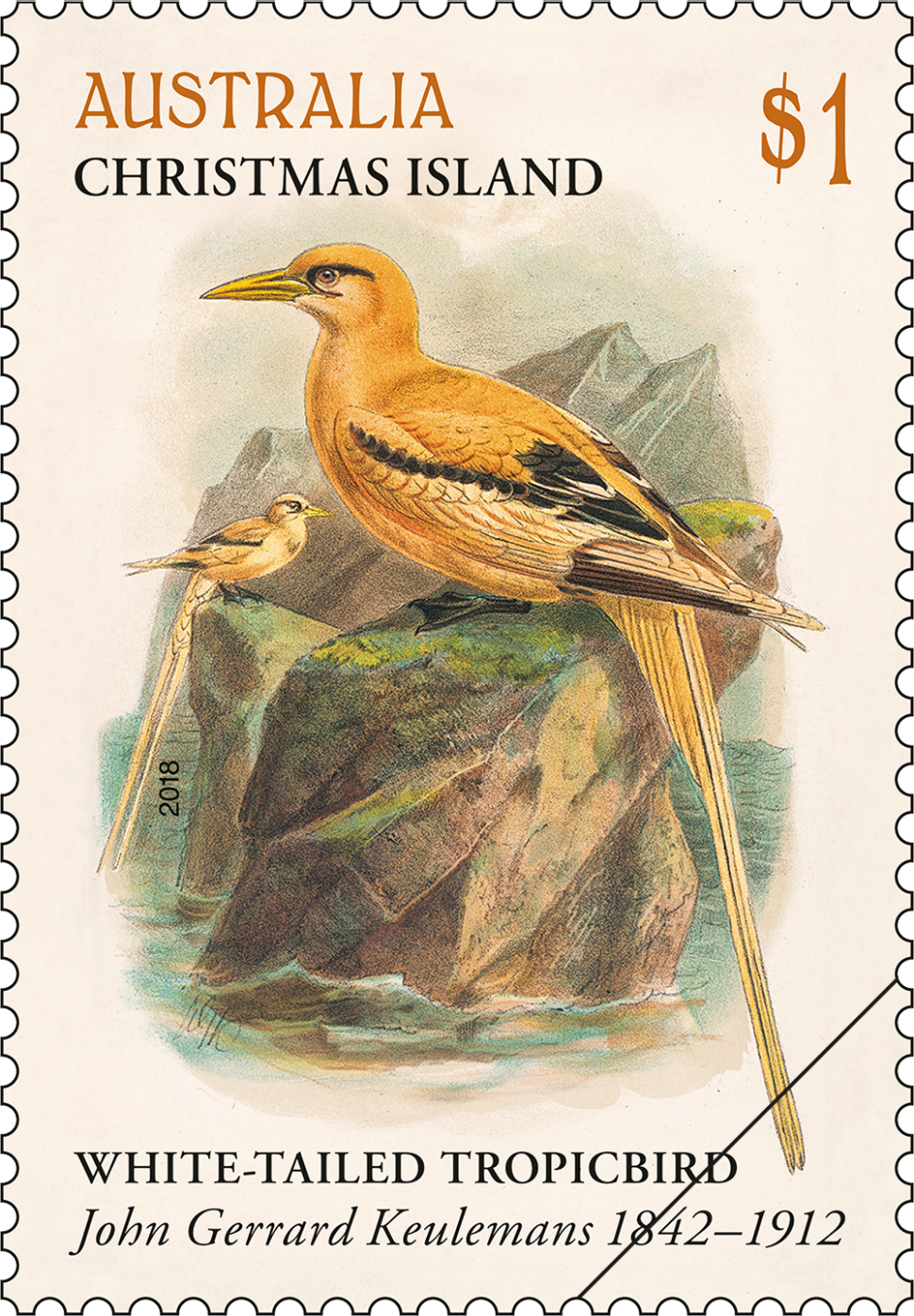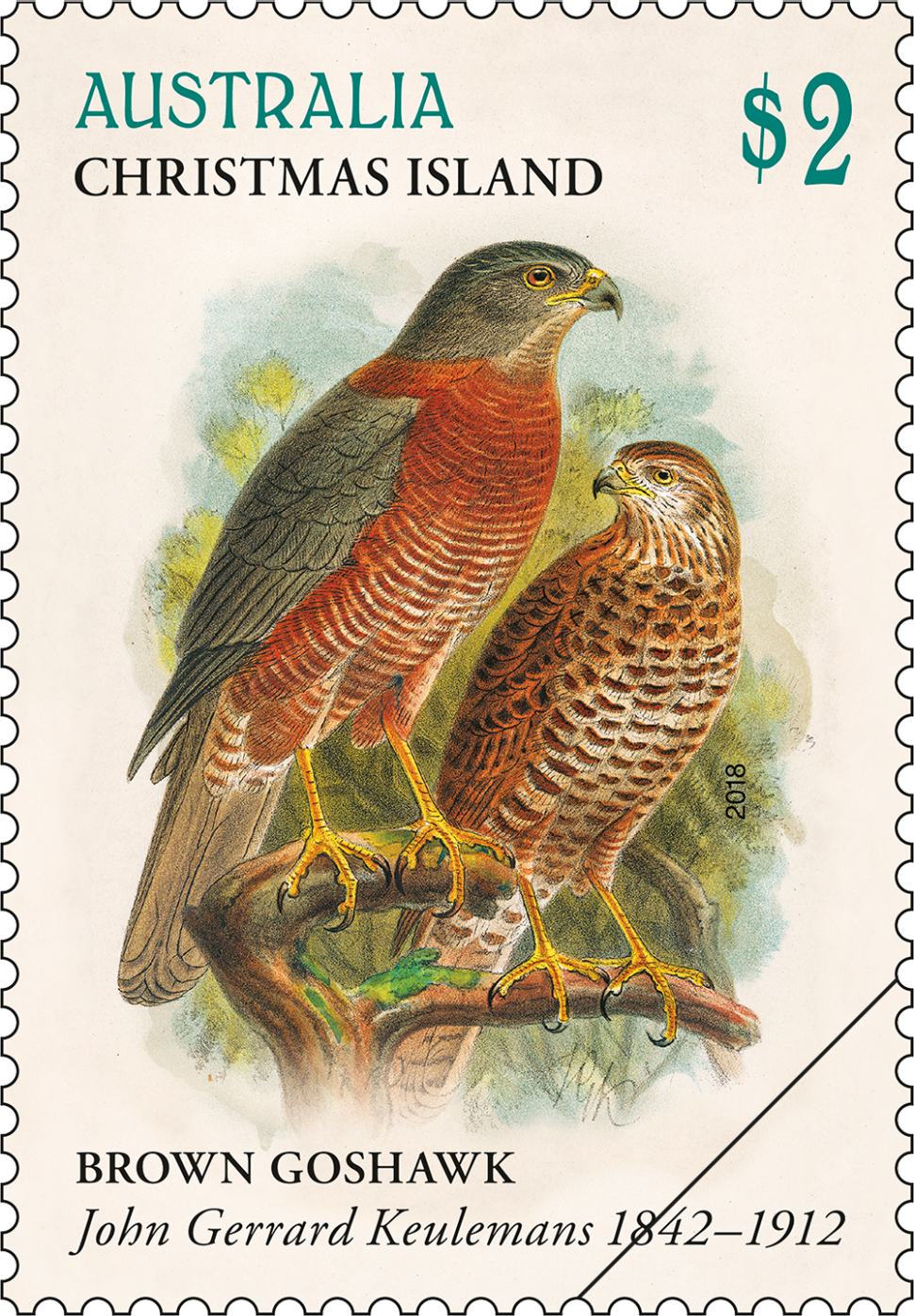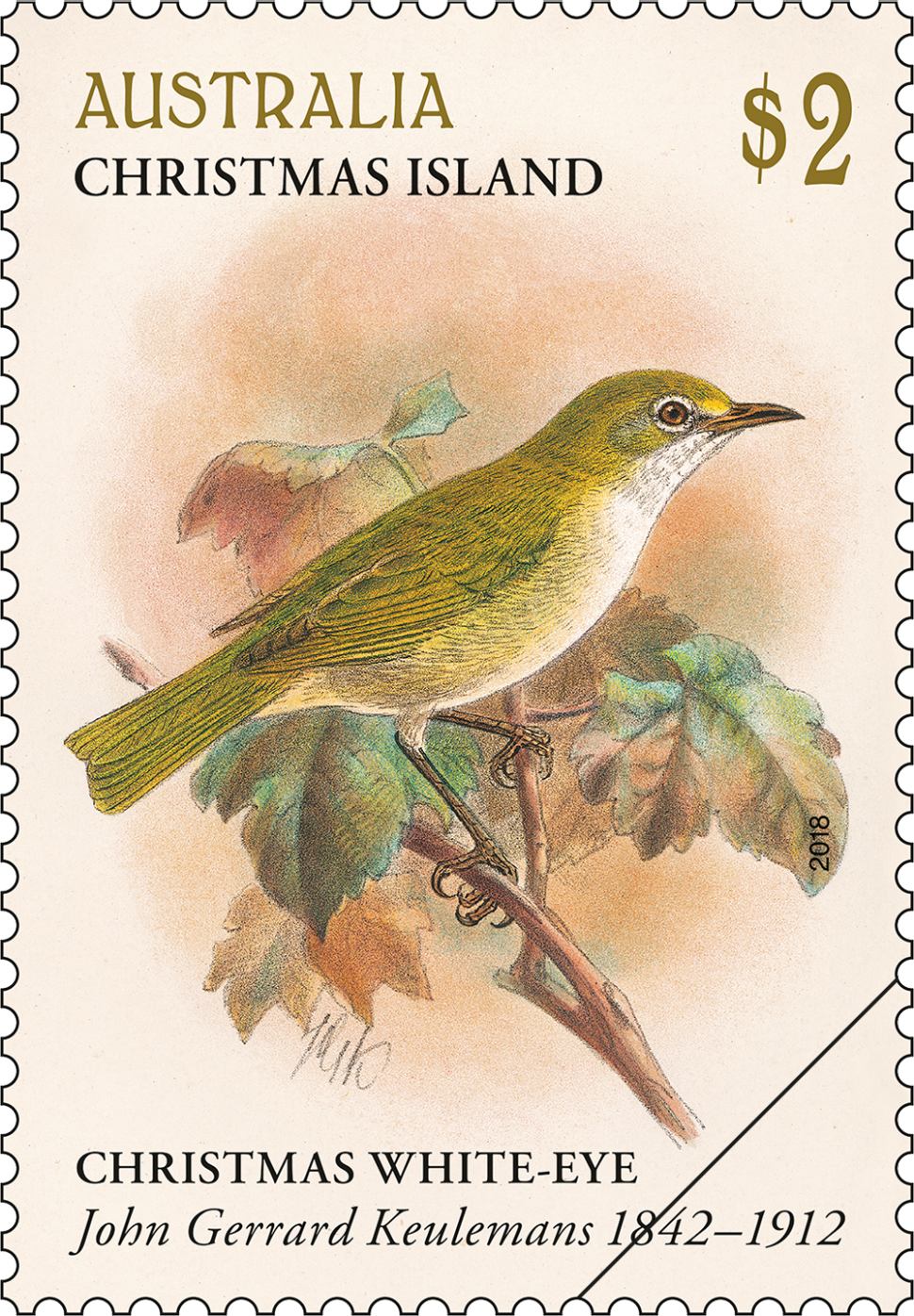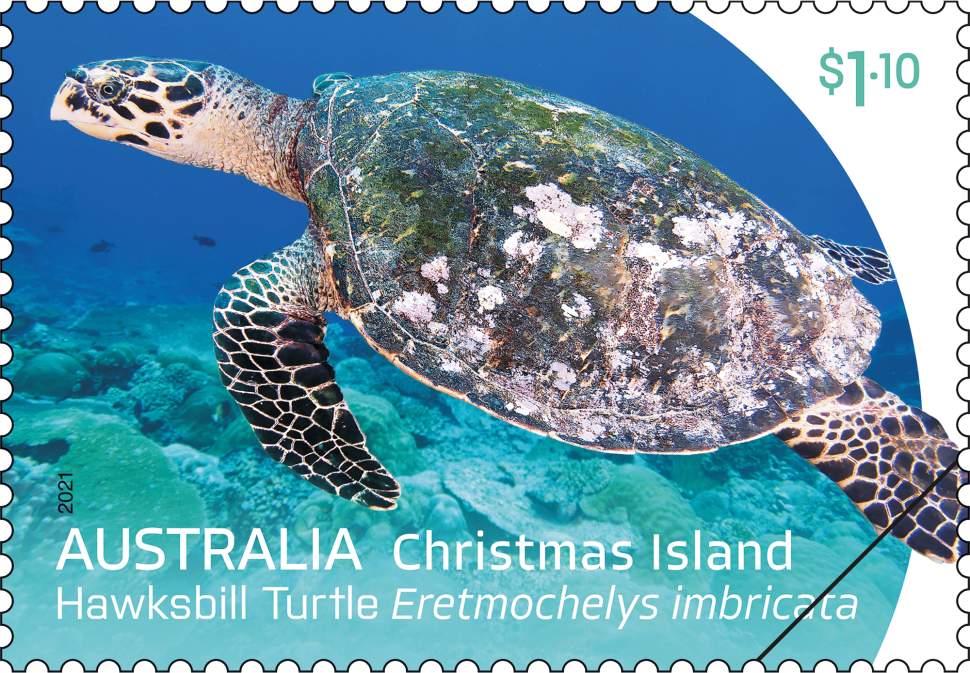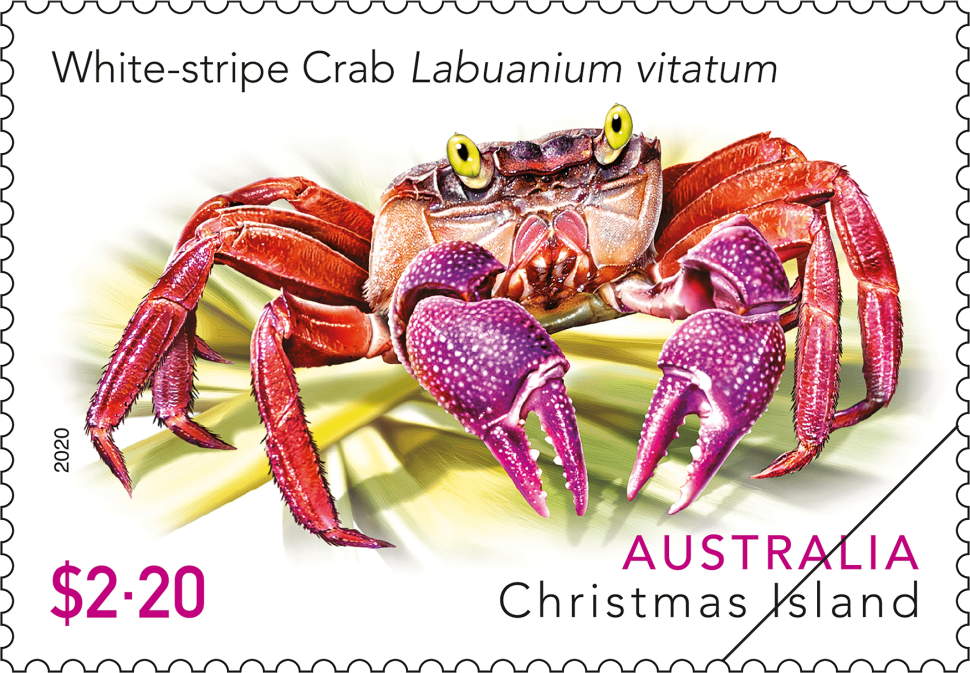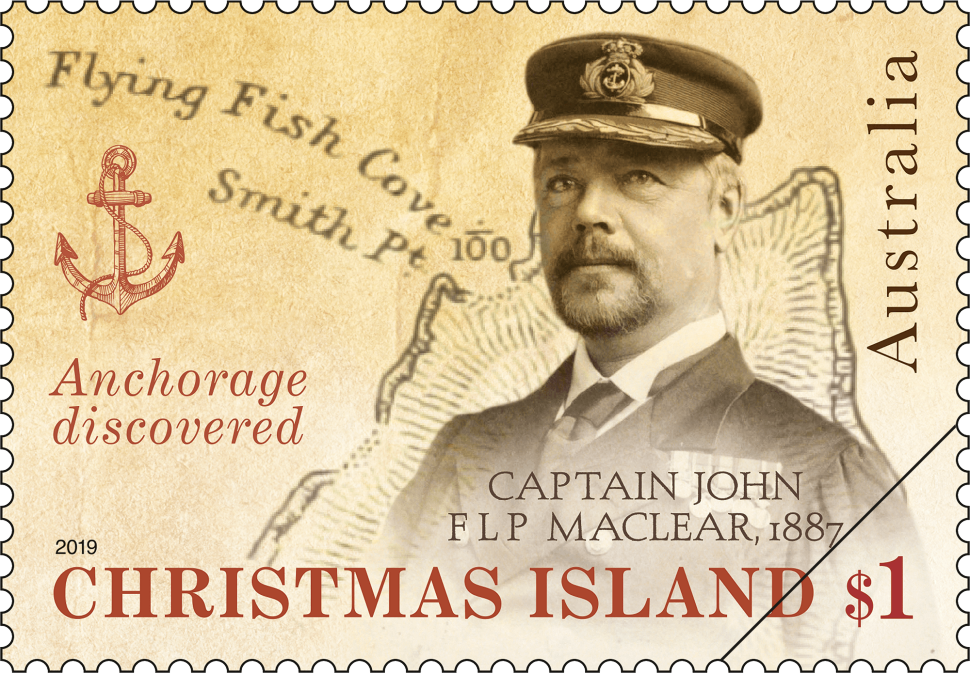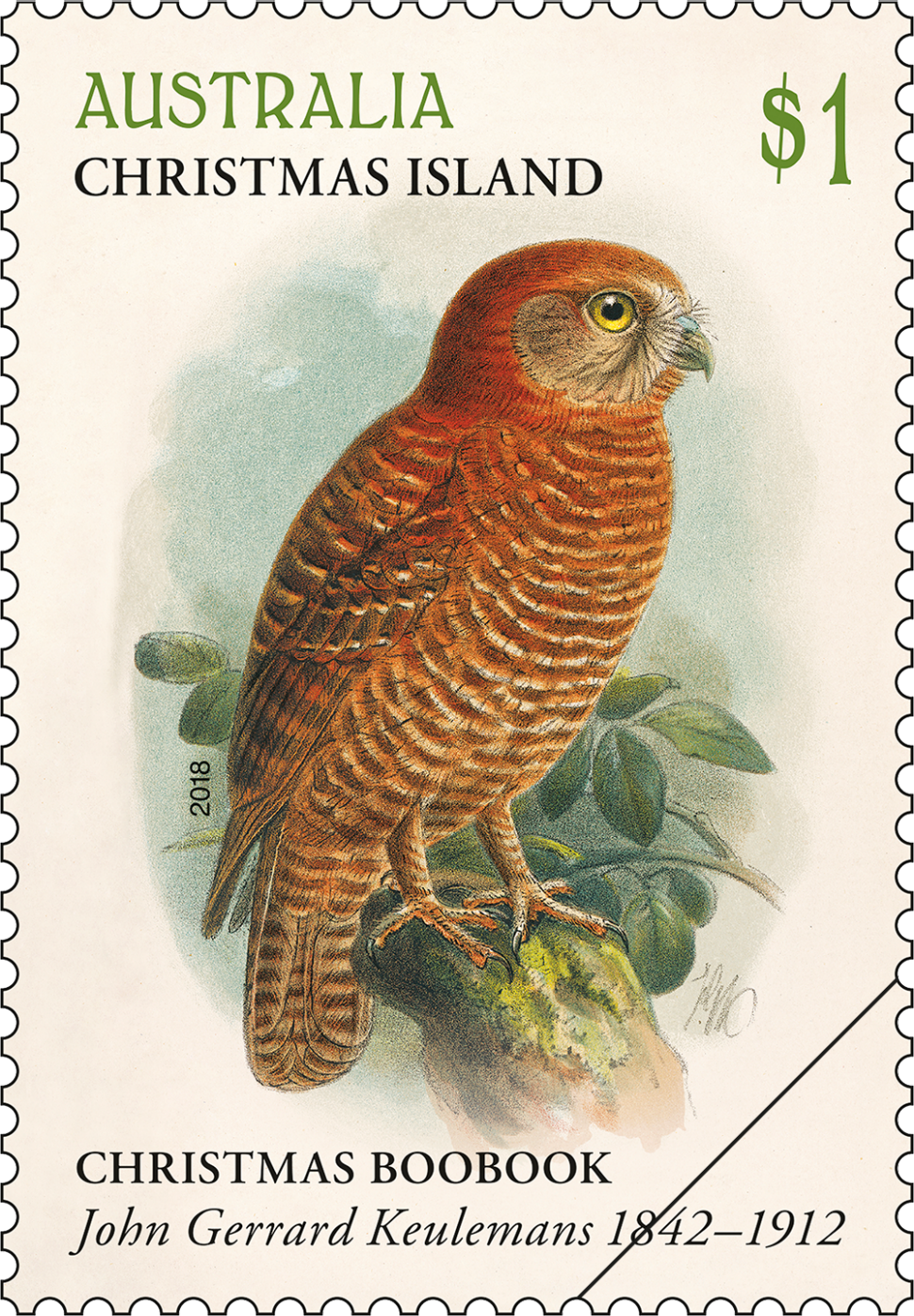Dutch-born John Gerrard Keulemans (1842–1912) was a popular bird illustrator in the 19th and early 20th centuries. Based in London for most of his career, he contributed to a very large number of important ornithological publications.
Several of Keuleman’s hand-coloured lithographs appeared in the published findings of the first survey of the natural history of Christmas Island (1900) by Charles William Andrews of the British Museum. Andrews had been sent in 1897 to study the island’s flora and fauna before the planned phosphate mine compromised its unique environment.
The stamps, designed by John White of the Australia Post Design Studio, present a selection of Keulemans’ characteristically detailed, closely observed hand-coloured lithographs of bird subspecies endemic to Christmas Island.
Products released in this issue
- Minisheet
- First day cover (blank, gummed, minisheet)
Technical specifications
- Issue date
- 28 August 2018
- Issue withdrawal date
- 28 February 2019
- Denominations
- 2 x $1, 2 x $2
- Stamp design
- John White, Australia Post Design Studio
- Product design
- John White, Australia Post Design Studio
- Printer - gummed
- EGO
- Paper - gummed
- Tullis Russell
- Printing process
- Offset lithography
- Stamp size
- 26mm x 37.5mm
- Minisheet size
- 135mm x 80mm
- Perforations
- 14.60 x 13.86
- Sheet layout
- Module of 50
- FDI postmark
- Christmas Island WA 6798
- FDI withdrawal date
- 26 September 2018
The Christmas Boobook (also known as the Christmas Island hawk-owl) is a small owl, about the size of a common pigeon. It has the distinctive call common to boobooks. The species is restricted to Christmas Island and is listed as Vulnerable under Commonwealth legislation, due to low numbers of mature adults (estimates indicate numbers of around 1,000). These birds nest in the hollows of trees in closed forests. They feed on large insects as well as on small vertebrates.
The White-tailed Tropicbird (Christmas Island subspecies) is a medium-sized seabird with long white central tail-feathers and a yellow bill. It has beautiful apricot colouring over its body, resulting in a golden appearance. It forages in warm waters off the coast for fish and marine molluscs, and nests in many locations across the island.
The Christmas Island Goshawk is a large hawk and a subspecies of the Brown Goshawk (although there’s debate as to whether it should be elevated to its own species or associated with a different species). It has a dark grey head and upperparts, mostly rufous underparts (and the throat of the male is white with grey spots). The female is considerably larger than the male. Adults occupy primary forest environments, where they feed on a wide range of vertebrates and invertebrates. There are an estimated 250 goshawks on Christmas Island. Although the population is considered stable, its low numbers make it Endangered under Commonwealth legislation.
The Christmas Island White-eye is a small greenish bird, so named for the white ring around the eye area. The White-eye is endemic to Christmas Island and occupies all forested habitats, feeding on fruit and insects. The species was introduced to the Cocos (Keeling) Islands and that population is now well established.
This content was produced at the time of the stamp issue release date and will not be updated.
